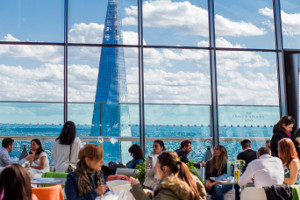Blog title image credit: Photo by Simon James / CC BY
According to a study by CitiQuiet, India is home to three of the top ten noisiest cities in the world - Mumbai (1), Kolkata (2) and Delhi (4).
Noise pollution is a growing menace and with it comes a rise in the number of people whose hearing is damaged. With a lack of awareness about hearing, many people often do not realize when hearing loss begins. Maintaining hearing health is important because hair cells in the ear that govern auditory response and body balance cannot be regenerated; once damaged, the only recourse is treatment to preserve the health of existing hair cells and arrest any further damage to these delicate sensory receptors.
Noise above 85 decibels (dB) is harmful.
To understand what this means, here are some everyday examples to help you comprehend noise levels that are safe and unsafe in the environment around you.
Noise levels up to 70-80 dB are generally comfortable although some people find noise above 75 dB uncomfortable. Within these levels are the sounds of breathing (10 dB), rustling leaves (20 dB), quiet rural farmland (30 dB), birds calling (40 dB) conversations at home (50 dB) and restaurant conversations (60 dB).
(Source: https://www.chem.purdue.edu/chemsafety/Training/PPETrain/dblevels.htm)
The noise of a car going on a highway at about 100 km/hour and 25 feet away and audio from music systems or television in a room are some noises that fall in the 70 dB to 80 dB range.
Cars speeding on a highway
At 85 dB and above, exposure to noise for more than 8 hours is classified as an occupational hazard. To protect hearing, the Centers for Disease Control and Prevention recommends limiting exposure to noise at 85 dB to 8 hours and thereafter ensuring that the time is halved for an increase by every 3 dB. This means that exposure to noise at 88 dB should be limited to 4 hours, at 91 dB to 2 hours and so on.
See below for some everyday noises, their associated approximate decibel levels and permitted exposure time to prevent hearing damage:
City Traffic
Noise Levels (Approximate)
Permissible Exposure Time
Hair Dryer
Noise Levels (Approximate)
Permissible Exposure Time
Loud Audio on Headphones
Noise Levels (Approximate)
Permissible Exposure Time
Firecrackers
Noise Levels (Approximate)
Permissible Exposure Time
Loud Rock Music Concert
Noise Levels (Approximate)
Permissible Exposure Time
Ambulance Sirens
Noise Levels (Approximate)
Permissible Exposure Time
Jet Plane Taking Off
Noise Levels (Approximate)
Permissible Exposure Time
Jet planes taking off from a distance of 100 feet produce a noise of approximately 130 dB; military fighter jets produce 150 dB at a distance of 80 feet, at which noise level the eardrum can rupture.
Protect your hearing. If exposure to harmful noise is inevitable, wear ear muffs or ear plugs to protect your ears from damage.
The louder a sound, the lesser the time you can listen to it safely. Turn down the volume of your audio and your television. Get your hearing tested regularly to detect hearing loss early.
May is Better Hearing & Speech Month 2016. Quadio is committed to creating hearing awareness through campaigns, mobile clinics and hearing checkup camps all across India. Write to us at customercare@quadio.in.




























